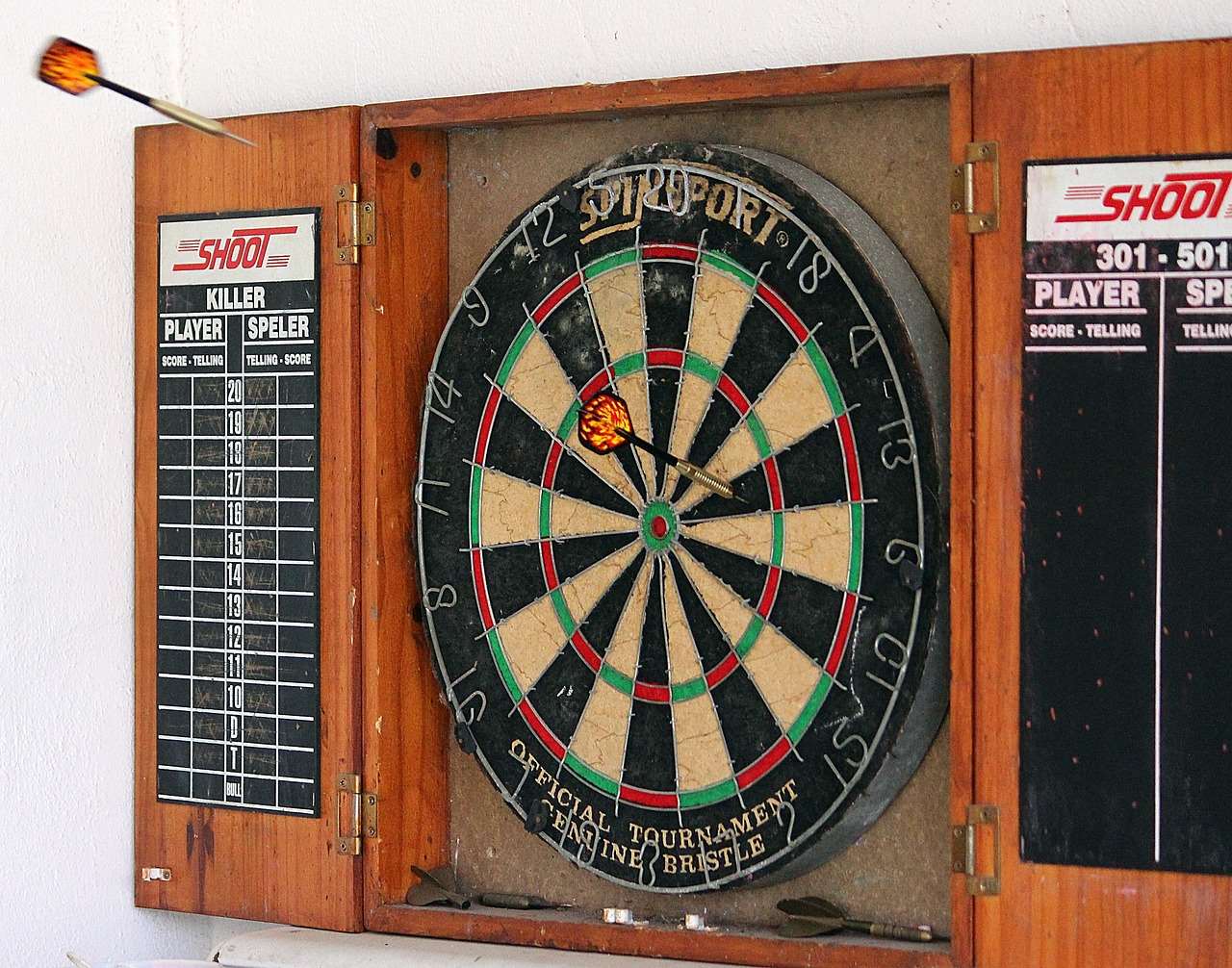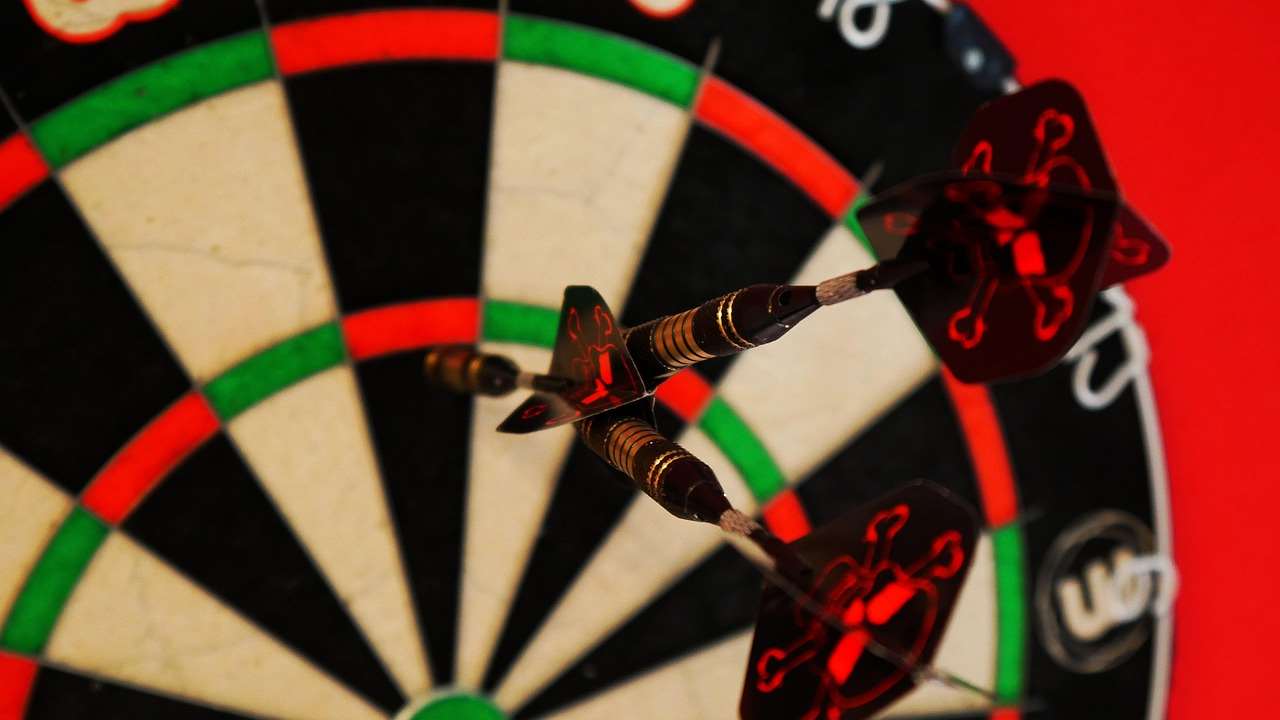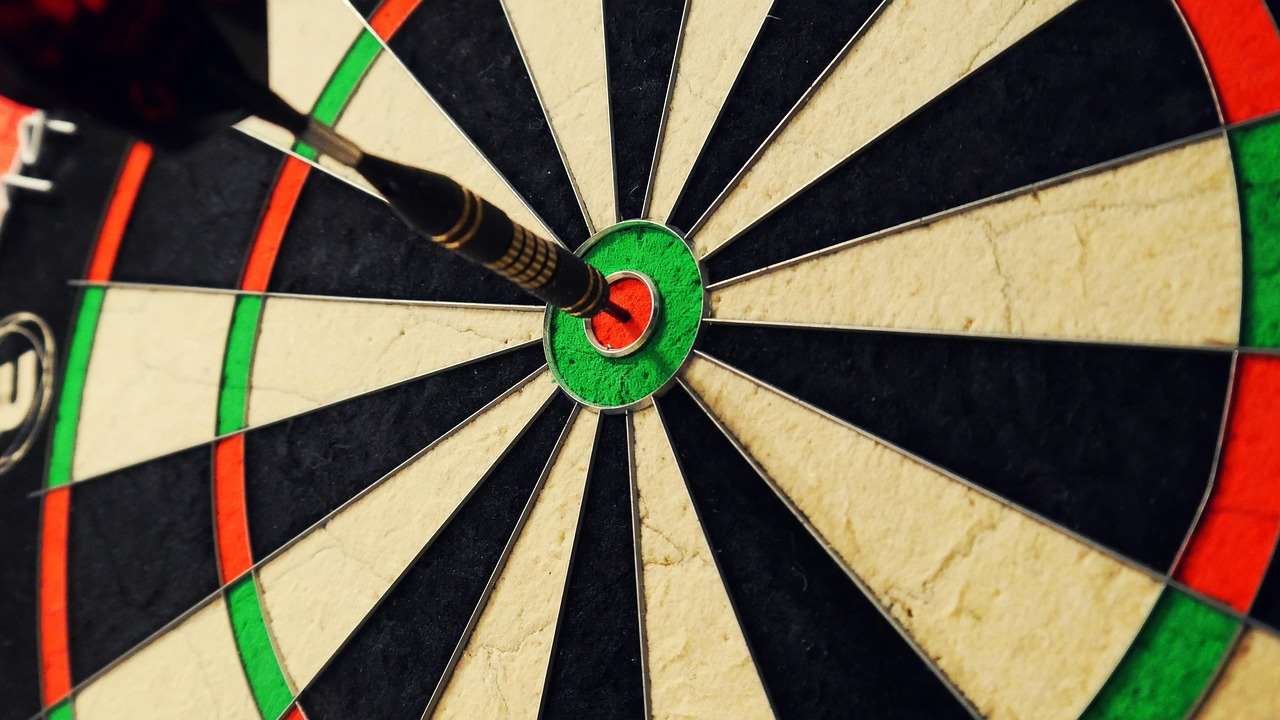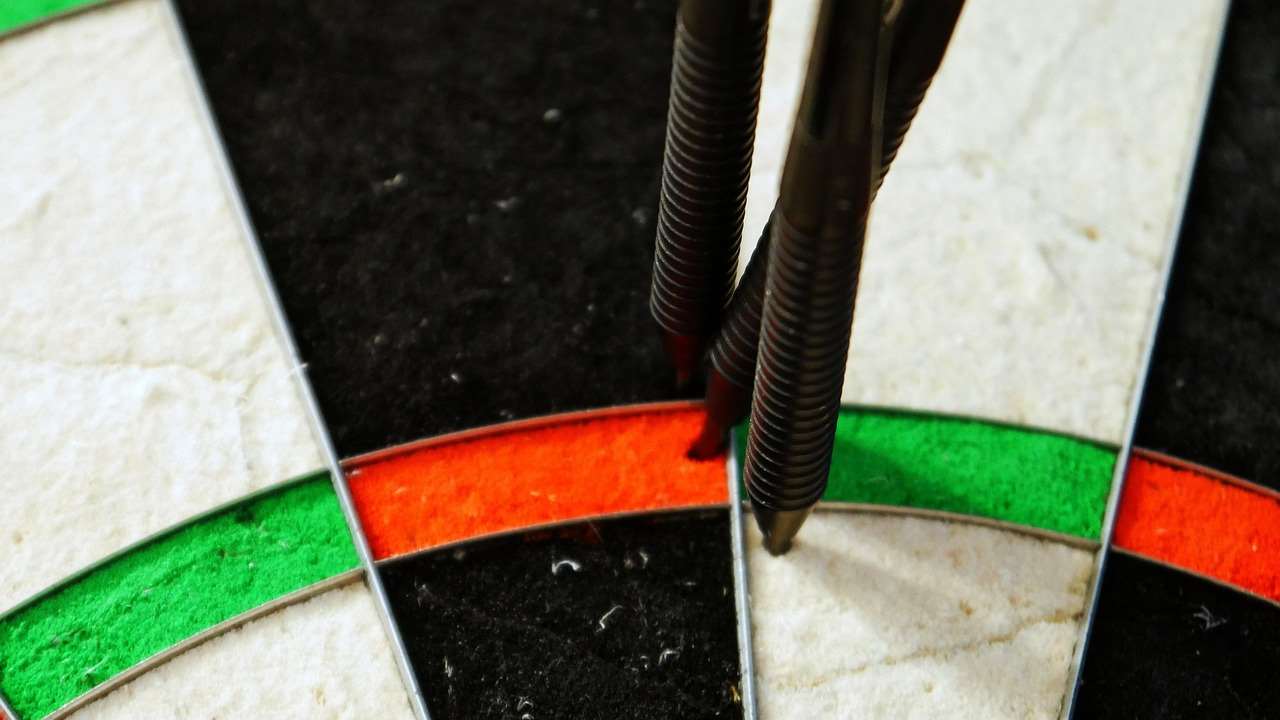Is your **electronic dart board** malfunctioning? Most issues with electronic dart boards stem from simple fixes, like cleaning sensors or replacing a faulty segment membrane, which you can tackle yourself to save time and money. This comprehensive guide covers common problems, troubleshooting steps, and **electronic dart board repair** techniques to get you back in the game quickly.
⚠️ Still Using Pen & Paper (or a Chalkboard)?! ⚠️
Step into the future! The Dart Counter App handles all the scoring, suggests checkouts, and tracks your stats automatically. It's easier than you think!
Try the Smart Dart Counter App FREE!Ready for an upgrade? Click above!
Understanding Your Electronic Dart Board: A Quick Overview
Before diving into **electronic dart board repair**, it’s helpful to understand the basic components and how they work together. These boards differ significantly from traditional bristle boards, incorporating electronic sensors, microprocessors, and display screens. A general understanding can streamline the troubleshooting process.
Key components of an electronic dart board include:
- Target Segments: The individual sections of the board where darts are aimed.
- Segment Membranes: These are located behind the segments and register when a dart hits. They are a frequent source of problems.
- Sensor Matrix: A network of sensors that communicate with the microprocessor to register scores.
- Microprocessor: The brains of the board, responsible for calculating scores and controlling the display.
- Display Screen: Shows the scores and game information.
- Power Supply: Provides electricity to the board.
Common Electronic Dart Board Problems and Their Solutions
Let’s explore some typical issues you might encounter and how to address them:
1. Dart Board Not Powering On
This is a fundamental problem. First, ensure the board is plugged into a functioning outlet. Test the outlet with another device. Next, check the **power adapter**. Is it securely connected to both the dart board and the outlet? If the adapter has a light, is it illuminated? A faulty adapter is a common cause. Finally, inspect the **power cord** for any signs of damage.

Solution: Try a different power outlet. If that doesn’t work, replace the power adapter with one that meets the board’s voltage and amperage requirements. Consider testing the adapter with a multimeter to confirm it is providing the correct power output. If the cord is damaged, replace it or consult a professional.
2. Segments Not Registering Hits
This is perhaps the most frequent complaint. When a dart hits a segment but no score is registered, the problem usually lies with the **segment membrane** or the sensor behind it. Dirt, debris, or wear and tear can interfere with the sensor’s ability to detect the impact.
Solution:
- Cleaning the Segments: Start by thoroughly cleaning the affected segment and the surrounding area with a soft, damp cloth. Avoid using harsh chemicals.
- Inspecting the Segment Membrane: If cleaning doesn’t work, you’ll need to access the segment membrane. This typically involves disassembling the dart board (refer to your board’s manual). Look for any signs of damage, such as tears, cracks, or debris.
- Replacing the Membrane: If the membrane is damaged, replace it. Replacement membranes are usually available from dart board suppliers.
- Checking the Sensor Connection: Ensure the sensor is properly connected to the circuit board. A loose connection can prevent it from registering hits.

Sometimes, the problem isn’t a mechanical issue at all but rather a settings issue. Check your board’s settings to ensure the **bounce-out setting** isn’t set too high, which could prevent registration.
3. Double Scoring or Incorrect Scoring
If the dart board registers a double score when you only hit a single, or if the score is completely wrong, this indicates a problem with the sensor matrix or the microprocessor. It could also relate to issues with darts trebles scores.
Solution:
- Recalibration: Some electronic dart boards have a recalibration function. Consult your manual to see if your board has this feature and how to use it.
- Sensor Cleaning: While less common, it’s still worth cleaning the sensor area behind the affected segments.
- Circuit Board Inspection: Inspect the circuit board for any signs of damage, such as burnt components or loose connections. This is a more advanced repair and may require professional assistance.
4. Display Issues
A malfunctioning display screen can make it impossible to play. The display might be dim, flickering, or showing incorrect information.
Solution:
- Check the Power Connection: Ensure the display is properly connected to the circuit board and receiving power.
- Inspect the Display Cable: Look for any damage to the cable that connects the display to the main board. A loose or damaged cable can cause display problems.
- Replace the Display: If the display is faulty, you may need to replace it. This is a more complex repair, and you may want to seek professional help.
5. Dart Board Freezing or Resetting
If your electronic dart board freezes or resets unexpectedly, it could be due to a software glitch or a hardware problem.
Solution:
- Reset the Board: Many boards have a reset button. Pressing this button might resolve the issue.
- Check for Firmware Updates: Some electronic dart boards allow you to update the firmware. Check the manufacturer’s website for any available updates.
- Power Cycle: Unplug the dart board from the power outlet for a few minutes, then plug it back in. This can sometimes resolve minor software glitches.

Tools and Materials for Electronic Dart Board Repair
Having the right tools and materials on hand will make the **electronic dart board repair** process much smoother. Here’s a basic toolkit:
- Screwdrivers: A variety of Phillips head and flathead screwdrivers to disassemble the board.
- Multimeter: To test the power adapter and other electrical components.
- Pliers: For gripping and manipulating small parts.
- Cleaning Supplies: Soft cloths, isopropyl alcohol, and cotton swabs.
- Replacement Parts: Segment membranes, power adapters, and other components that are prone to failure.
- Soldering Iron and Solder (Optional): For repairing damaged circuit board connections.
- Dart Mat: to protect your floor while setting up and repairing your dart board.
Advanced Troubleshooting Tips
Sometimes, the problem isn’t immediately obvious. Here are some advanced troubleshooting tips:
- Consult the Manual: The owner’s manual is your first resource for troubleshooting information.
- Search Online Forums: Online dart forums can be a valuable source of information and advice. Other users may have encountered the same problem and found a solution.
- Contact the Manufacturer: If you’re unable to resolve the problem yourself, contact the manufacturer for support.

Preventative Maintenance for Your Electronic Dart Board
Preventative maintenance can help extend the life of your electronic dart board and minimize the need for **electronic dart board repair**. Consider darts set up kit options to ensure proper installation and protection. Regular maintenance helps ensure your enjoyment. Here are some tips:
- Clean the Board Regularly: Wipe down the board with a soft, damp cloth to remove dust and debris.
- Use Quality Darts: Using darts with sharp points can damage the segments and membranes. Use darts with smooth, rounded points. The quality of your darts and regular maintenance like cleaning can really extend the life of your board.
- Avoid Excessive Force: Don’t throw darts too hard. Throwing darts with excessive force can damage the board.
- Protect the Board from Moisture: Keep the board in a dry environment to prevent corrosion and other damage.
- Consider a Dartboard Surround: This will not only protect your wall but can also help reduce bounce-outs, preventing unnecessary stress on the board.
When to Seek Professional Help
While many **electronic dart board repair** tasks can be handled DIY, some problems require professional assistance. If you’re uncomfortable working with electronics, or if you suspect a problem with the circuit board or microprocessor, it’s best to consult a qualified technician. Similarly, darts vs computer matches are more fun with a working board. Also, if you’ve tried all the troubleshooting steps and the board still isn’t working, seek professional help.

Attempting to repair complex electronic components without the proper knowledge and tools can cause further damage and may even be dangerous. Know your limits and don’t hesitate to seek professional assistance when needed. Don’t forget a good Mobile dart scorer
Conclusion
Performing **electronic dart board repair** doesn’t have to be daunting. By understanding the basic components, identifying common problems, and following the troubleshooting steps outlined in this guide, you can often fix the issue yourself and get back to enjoying your game. Remember to prioritize safety and seek professional help when needed. Now that you’re equipped with the knowledge, grab your darts and get back to the oche! Take action today, troubleshoot your dartboard and get back to enjoying your games.
Hi, I’m Dieter, and I created Dartcounter (Dartcounterapp.com). My motivation wasn’t being a darts expert – quite the opposite! When I first started playing, I loved the game but found keeping accurate scores and tracking stats difficult and distracting.
I figured I couldn’t be the only one struggling with this. So, I decided to build a solution: an easy-to-use application that everyone, no matter their experience level, could use to manage scoring effortlessly.
My goal for Dartcounter was simple: let the app handle the numbers – the scoring, the averages, the stats, even checkout suggestions – so players could focus purely on their throw and enjoying the game. It began as a way to solve my own beginner’s problem, and I’m thrilled it has grown into a helpful tool for the wider darts community.